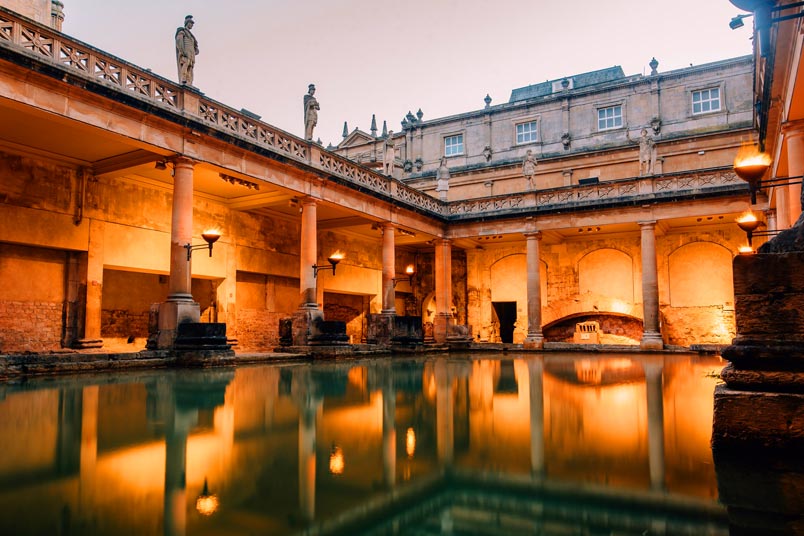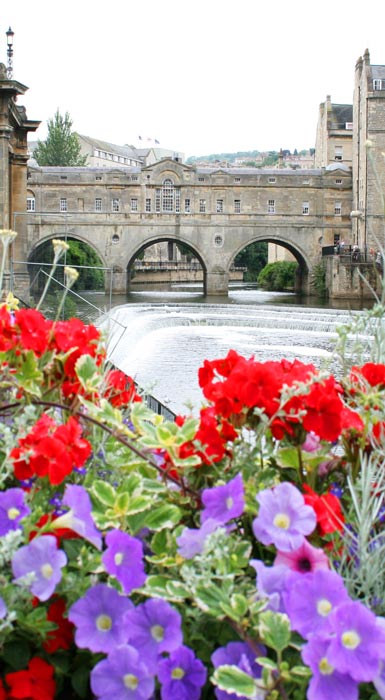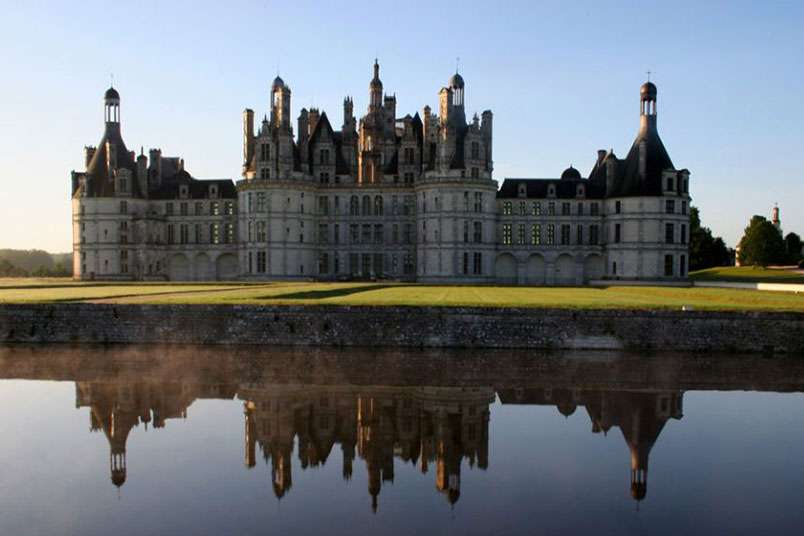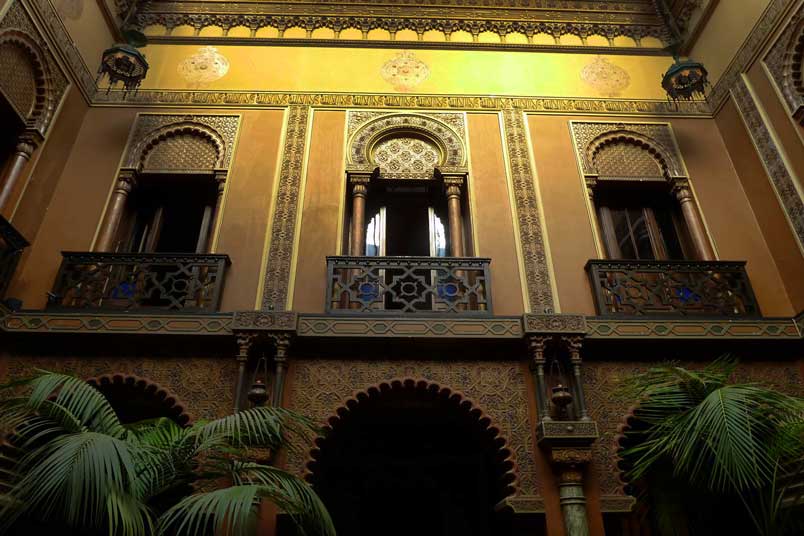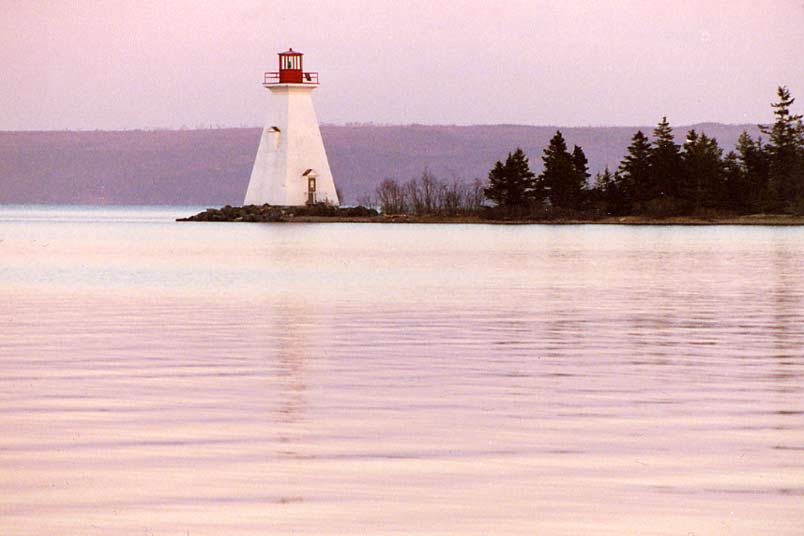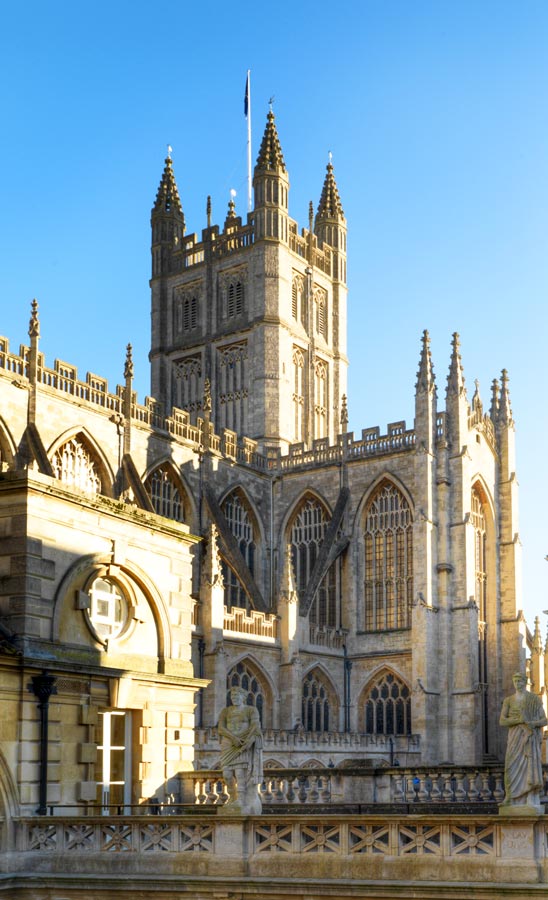
Here are 5 reasons to visit Bath England and what not to miss in this great British Regency town.
One of the special things about travelling in Britain is the realization of how many famous writers and artists have called Bath home. A beautiful place to spend time, it is no surprise that so many people have enjoyed it so much. Here are 5 reasons to visit in Bath England and what to see and do there during your next visit.
The Roman’s loved Bath and so will you!
Come to the UK and discover these 5 Reasons to visit Bath England
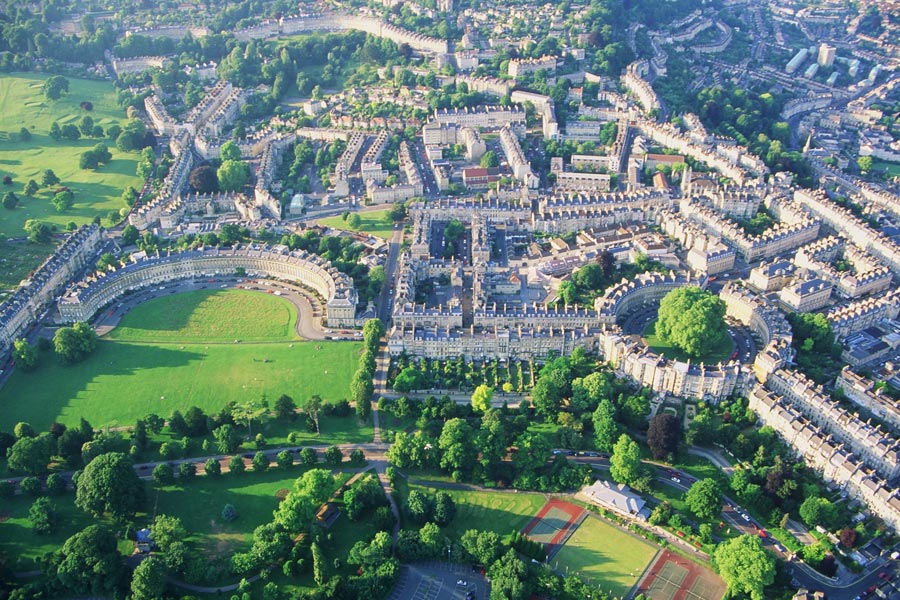
Where is Bath, UK?
The largest city in the lovely county of Somerset, Bath is found in England’s Westerly corner, and is an area of rolling green fields, pastures and forests.Reached by either a beautiful cycle trip down the pretty Kennet – Avon Valley Canal system or an easy day trip west from London (only 115 miles | 185km away), it is a fascinating UNESCO Heritage city to spend time in.
Geoff, Cycling Country Director, spent his university days living in the city, enjoying the cycling and of course, the strong cider. He gives us the top 5 reasons to visit Bath England on your next visit to Britain.
The obvious one first,
1 / Bath's Magical Powers of the Bath - super cures for cycling sores
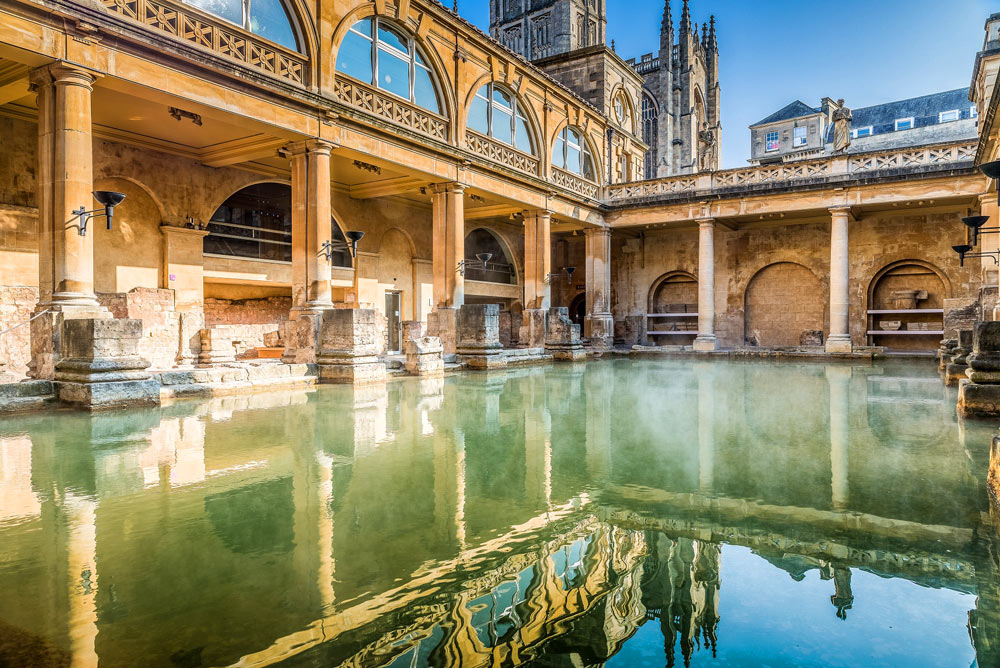
What is the most famous sight in Bath, England? The Roman Baths
One of the 5 reasons to visit Bath England is in its namesake, the Roman Spa. Any place known and loved by the ancient Romans has got to have some merit. Thus, Bath or as the Romans knew it in 43 AD, Aquae Solis, was the prime tourist destination for the toga clad a few thousand years ago in 60-70AD.
Feeling sore after your cycle to the city, check out the temple of Minerva and its surrounding statues of gods in the foggy thermal mists, the warmest geothermal waters in the UK. Today, although the thermal spas are now marketed a little bit more professionally, they still provide the population a chance to rest and cure those cyclists’ weary bones. It truly is the Best Roman Spa experience around Europe.
In fact, so powerful is the call of this place that an 17th century English revolution started due to these amazing curative properties and gave rise to one of the first “conspiracy theories”. .

What was the World’s First Conspiracy Theory?
Imagine the controversy when King James II’s openly Catholic’s younger wife, had a baby, after being “cured” of her infertility and child bearing issues in Bath’s medical waters
The population was doubtful that the waters could alleviate these “women’s problems” completely (especially as she had already lost 10 children in 10 years!) and it was not happy to think of a longer Catholic dynastic reign. King James’ 2 daughters, already adults, were both Protestant as well.
Still with me?
Conspiracy theories of the 17th century
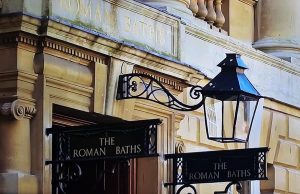
James’ Italian wife, Mary of Modena’s, trips to Bath’s waters, were apparently not taken seriously…..until..she got pregnant again at 30 years old in 1687 to a bouncing baby boy. The Protestant majority fumed, saying, “Fake News!” and that the baby had been smuggled in to the palace in a bed warming pan.
With a Catholic heir securely in place, the sisters banded together and over-threw their father, baby brother “The Pretender” and Jacobites (supporters of James) in the “Glorious” Revolution of 1688. Mary and William of Orange became the ruling monarchs.
Thus, be warned, the waters of Bath are very powerful indeed!
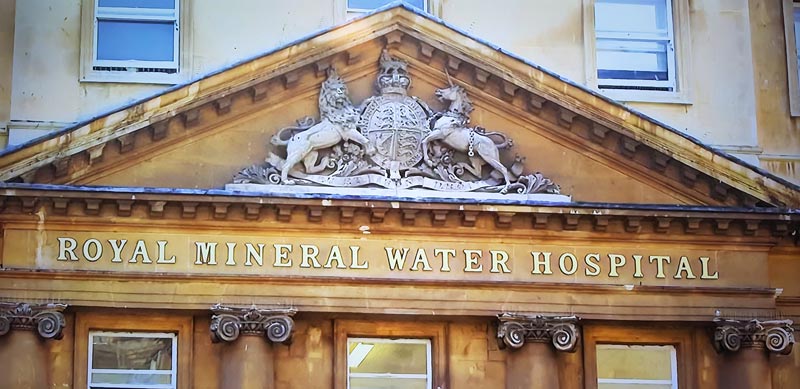
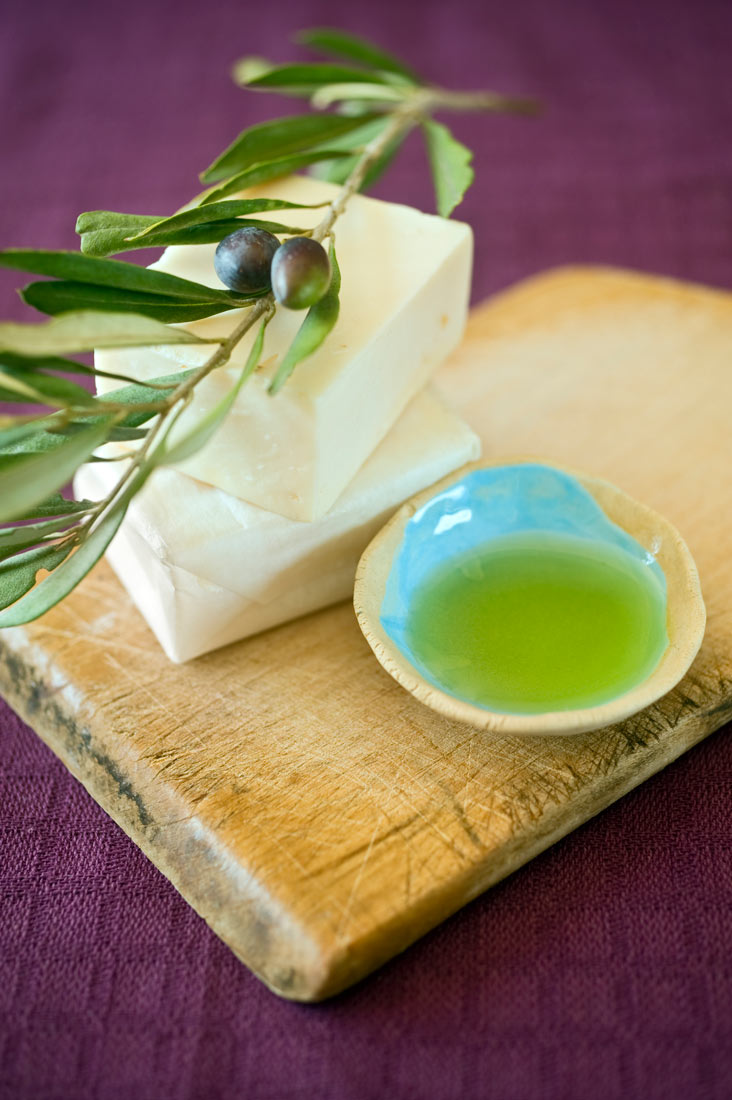
Bath Spa’s Curative Properties
The baths for those who are curious about their healing properties, are have said to have also cured Prince Bladud’s (who was the supposed father of King Lear) leprosy and who joyfully founded the city around the same waters in 863 BC.
A modern footnote to the powers of these waters is that after WWI, thousands of soldiers were billeted in Bath in order to recover from war time wounds.
Today, you can not only drink a cup of those miraculous waters, but the view from the rooftop pool of the city is lovely. It is also the only day spa in the UK where you can bathe in natural thermal waters.
Definitely worth a dip in the baths for the sheer history of the place
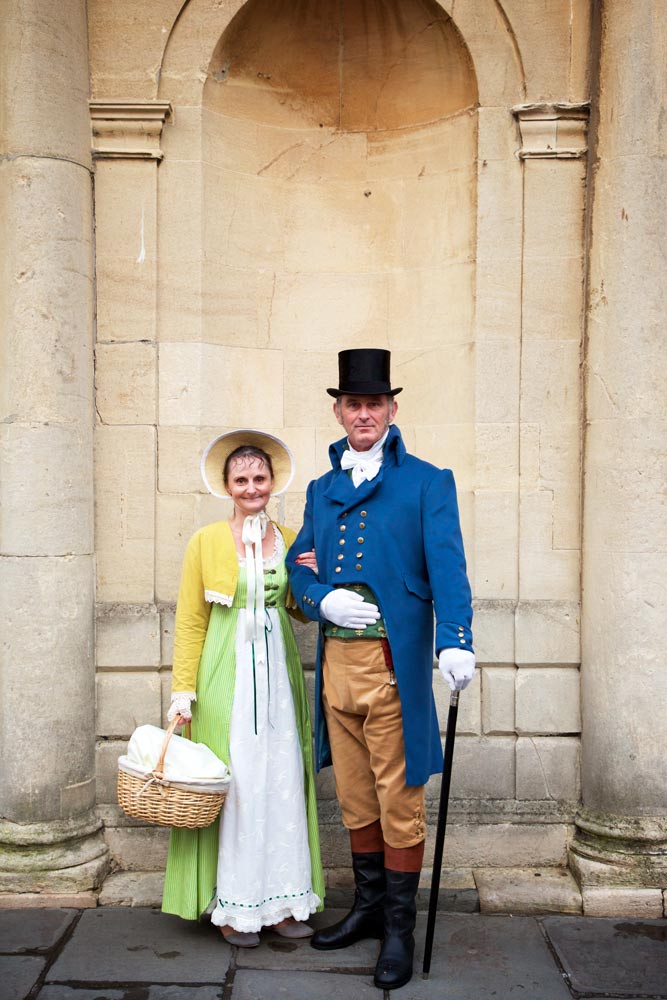
“Oh! Who can be ever tired of Bath?” Jane Austen – ‘Northanger Abbey’
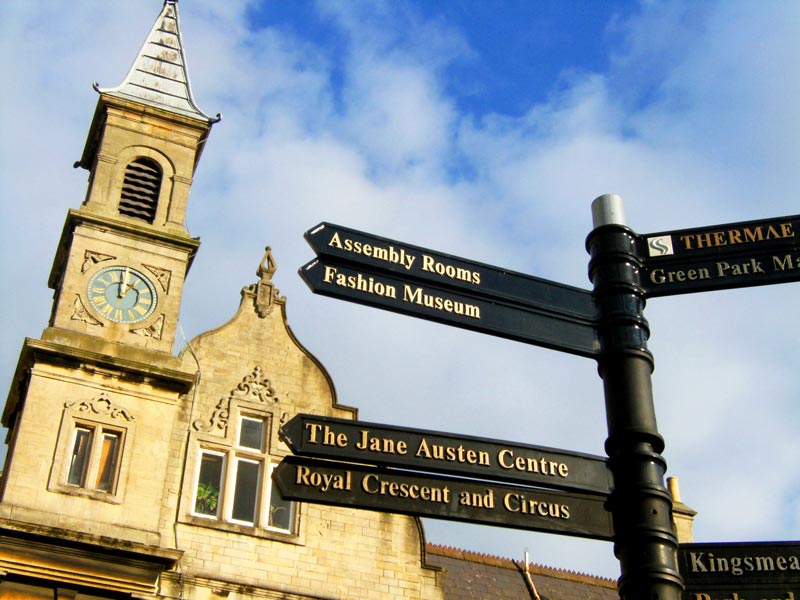
2 / The Many Famous people who have lived & Visited
5 Reasons to visit Bath, England – her famous residents
What’s so great about Jane Austen? Besides her sharp observations of human nature and beautiful style..!
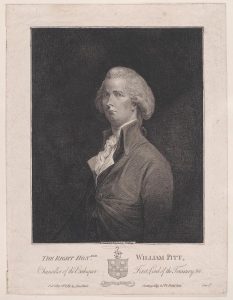
Book worms will love this place as Jane Austen (1775 – 1817), one of Bath´s and Britain’s best known and loved authors, lived here from 1801 to 1806. Today you can see dressed up characters outside The Jane Austin Centre, which is a small museum about Austin and her work. Her intimate knowledge of the city is reflected in two of her novels, “Northanger Abbey” and “Persuasion”, which are largely set in Bath. Born into a fairly humble family but with encouraging parents, this single woman, who died at 42, will forever be remembered as a genius. Her style and prose and her two most well known novels, Pride & Prejudice and Sense & Sensibility, are both jewels.
The love of Austin is so great here that you can meet your own Mr. Darcy at the annual Regency Costumed Summer Ball. How Quaint! Not just Austin enjoyed Bath but Charles Dickens also wrote “the Pickwick Papers” here. Other residents include prolific Dr. Johnson (writer of the Dictionary fame), Lord Horatio Nelson (Lady Hamilton lived here shortly after his death) and composers Handel and Hayden. British Prime Minister William Pitt the Younger, lived at no. 7 The Circus and painter Thomas Gainsborough spent time here. No secret to the limelight in modern times either, known 20th century residents were Theatre producer of famous shows like Cats, Phantom of the Opera, Les Miz, Sir Cameron Mackintosh and TV Baker chef Mary Berry. As well, Nobel Prize winner, molecular biologist, Sir Richard J. Roberts, actor Emily Head and Comedian Musician, Bill Bailey also come from Bath.
Pretty impressive pedigree and these are only a few.
3 / Visit Bath Cathedral, the last English Gothic Cathedral
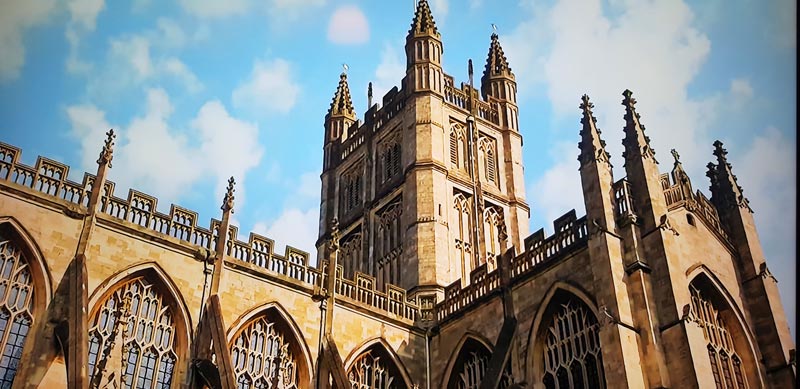
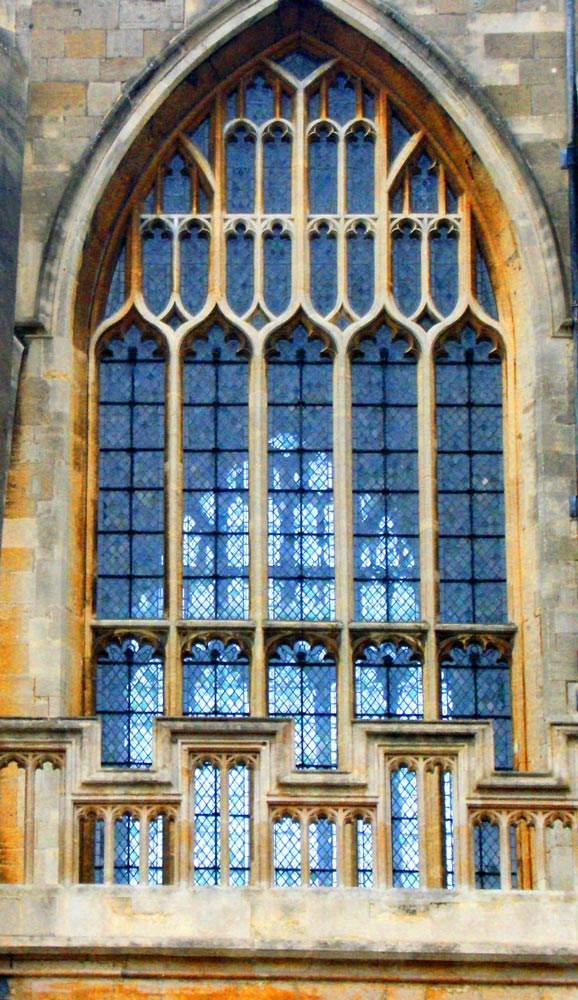
Bath Cathedral – Top Blocks
Aside from all these personalities and stories that arise from the town, the architecture that make this town great are worth comment. It surely is an unique city and wandering its twisting alleyways up and down hill, you will at some point realize that it is not so famous for the Roman bath`s architecture but for its stunning Georgian buildings.
Due in part to the Spa´s Royal patronage (Queen Anne´s own try at fertility after 19 miscarriages), the city became in the late 1600s and early 1700s a place to be seen in by those of society which prompted the boom of city infrastructure to be built in the most elegant and gentile way that we see today.
Its Abbey Cathedral (where a King of England, Edgar the Peaceful was crowned in 973 AD.) which is the notable hearth though and of course also a magnificent building. Founded in the 7th century but rebuilt in the 16th and 17th century it went into great disrepair with Henry the VIII’s dissolution of the nation’s monasteries (1539) upon their disapproval of his marriages to Anne Boleyn, etc.. At that time, its valuable led roof was striped and it was put up for sale in today’s money of about 160,000 GBP! No buyers though.
It is considered to be the last great medieval cathedral to have been built in England and has been a place of Christian worship for over 1,200 years.
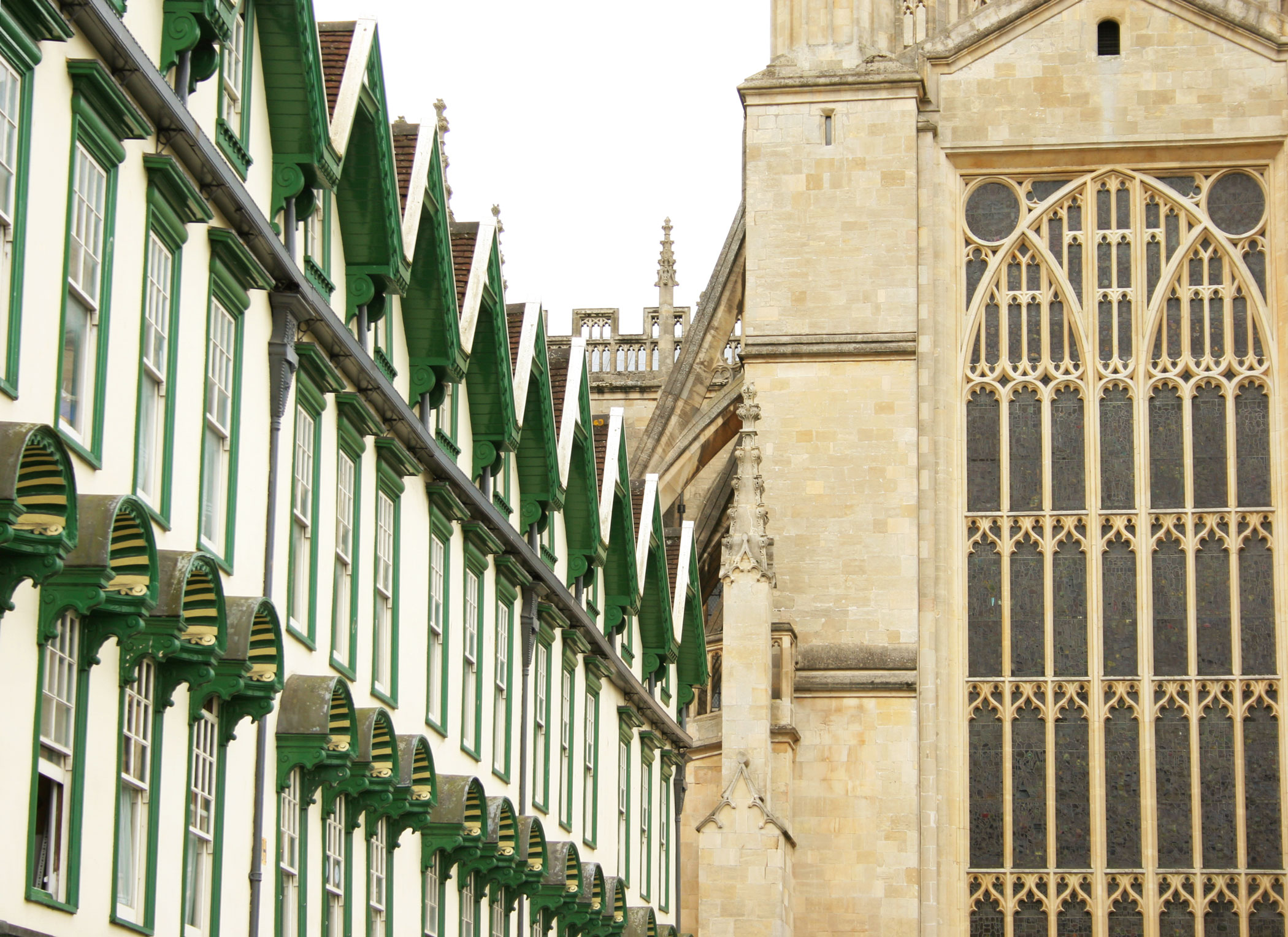
4 / Bath, a movie Netflix backdrop
Bath, a movie Set galore – Spot a star while visiting
Bath has had scores of movies and TV series filmed in the city, see if you can recognize a few.
The Duchess (2007), which had an all star cast featuring Keira Knightley about the 18th century aristocrat Georgina, Duchess of Devonshire had the Royal Crescent featuring in it. The Royal Crescent, is a half moon panorama of 30 joined Georgian limestone apartments looking out onto a park. Built by John Wood and son in 1767 it is one of Britain´s best examples of Georgian architecture. For an even more realistic feel, go to the first house built, No. 1, which is a museum that through original fixtures, furnishings and fittings, preserved the feel of an authentic Georgian home. The Circus, (large roundabout surrounded by homes) was also John Wood Jr´s work and the two edifices complement each other being symbols of the sun and moon from above.
Watching Bridgerton on Netflix? Visit Bath to see the film sets of Bridgerton. Lovers of this costume drama (2020 – ongoing), may spot Bath’s iconic Royal Crescent as being used to resemble Mayfair in London. Once again, No.1 is used, but this time as the facade of Featherington House. The city’s first public art gallery, the 18th century building, Holburne Musuem, represents Lady Danbury’s Estate in Series 1, Episode 1. Visit today’s museum and take a tea in their garden cafe.
If you love period pieces, then a must visit is the Fashion Museum located in the beautiful Assembly Rooms, next to the Royal Crescent and Circus, (10 minutes’ walk from the city centre).
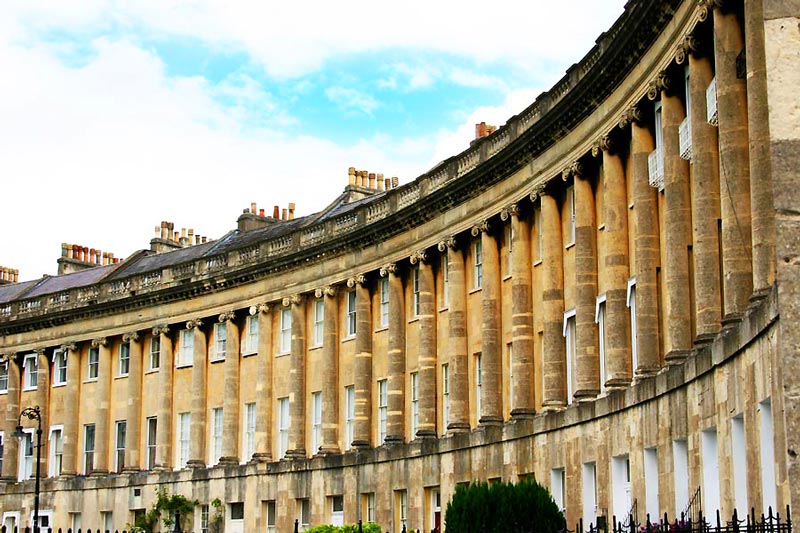
Bath’s Pulteney Bridge, is a nice photo op
The other post card picture is Pulteney Bridge, built at the end of Bath’s heyday in 1773 by the rich William Pulteney. He was creating the suburb to Bath’s east and needed something to attach it to the city itself. An attractive bridge, it is shop lined (1 of only 4 in the world) over the River Avon and there are several good spots in nearby Sydney Gardens to get a view of it.
Due to its elegance, Les Misérables (set in France) was shot here and one of several locations used for Oscar-winning musical, (starring Hugh Jackman and Russell Crowe). Stunt shots for Javert’s suicide scene were re-shot here in 2012 at Pulteney Bridge and Weir.
5 /Like Food & Music? Two great reasons to visit Bath
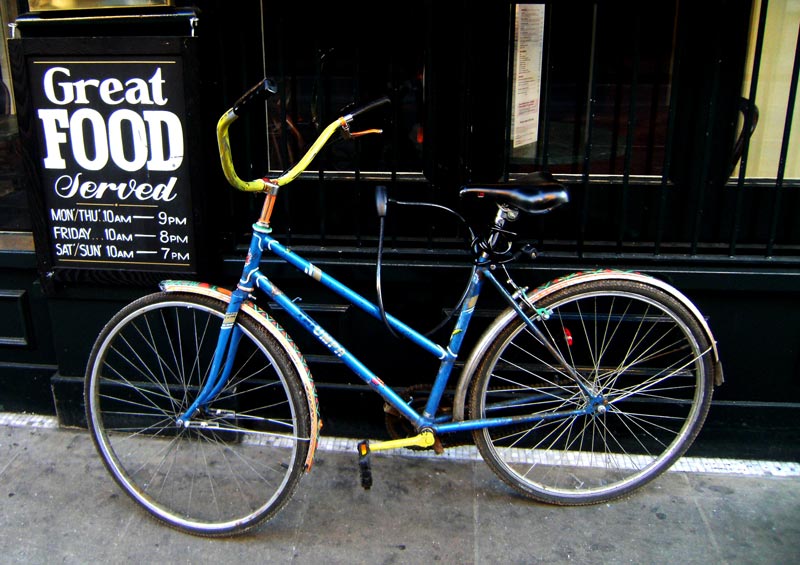
Where are the Best places to eat in Bath, England?
Sally Lunn Bun & Bath’s other great Eats, eating out is one of the main pleasurable 5 reasons to visit Bath England!
No doubt that whilst you cycle this city with all is ups and downs and attractive shopping mews, you will get hungry and thirsty. One of the mainstay’s of the city is the famous Sally Lunn Bun or “Bath Bun”. Sally Lunn was an enterprising 17th century woman who made and sold tea cake to the city in 1680. Creating them in a small kitchen (still there, waiting to be visited), it also happens to be the oldest house in Bath (with Roman and Medieval foundations). Whilst there have been many pretenders of the bun, the original’s (a type of brioche bread) secret recipe has been passed on with the deeds to Sally Lunn’s house and is still made by the bakers of the tea shop today.
One for the upscale foodie, is Gordon Jones, because there are so many local producers of vegetable, strong cheeses, corn fed poulets and other delights there is no excuse not to have a great meal. Here you will get one. A beautiful menu that is a delight to look at and not far from those famous baths.
What are the best Pubs in Bath for Drinking and Music?
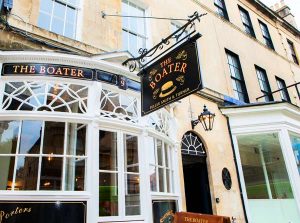
Ok, you are in England and you want a traditional pub? The one to try is the Old Green Tree, on Green Street now a listed building. This is a cozy pub, with all the trimmings (think Oak panels and fireplace). Get your roast beef sandwich here and crafted beer.
Another one that rivals the Old Green pub, is the Star Inn, licensed in 1760 (on the Paragon), it is what you dream your local pub might look like with many original features and no fruit machine! Need any more than 5 reasons to visit Bath England, how about its music scene?
Where can you hear live music in Bath?
For music, one of the most famous places is Moles, a nightclub, and virtual institution of live music. A venue of some repute with the likes of Ed Sheeran, Tears for Fears, The Smiths, The Cure, Oasis, all playing there on their way to the top. Interestingly, the original founder, Phillip Andrews, came to Bath after his dream of setting up a bike shop – cafe in Yorkshire, died a death due to the harsh winters experienced in the 1970s there.
Another long time favourite has been the pub and music venue, the 18th century Bell Inn on Walcot Street, which a few years ago, was on the threshold of going under. That was until stars like Peter Gabriel and Robert Plant backed a community buyout scheme in 2013 to create a co-op by the patrons of this long time music venue. Great place to get an ale and enjoy live music. Open Mic is Thursday nights!
Discover all these places on our Cycling Country Cotswold Self Guided Bike Tour that goes from Oxford to Stonehenge via Bath. It really is a fantastic place to explore on bike.


